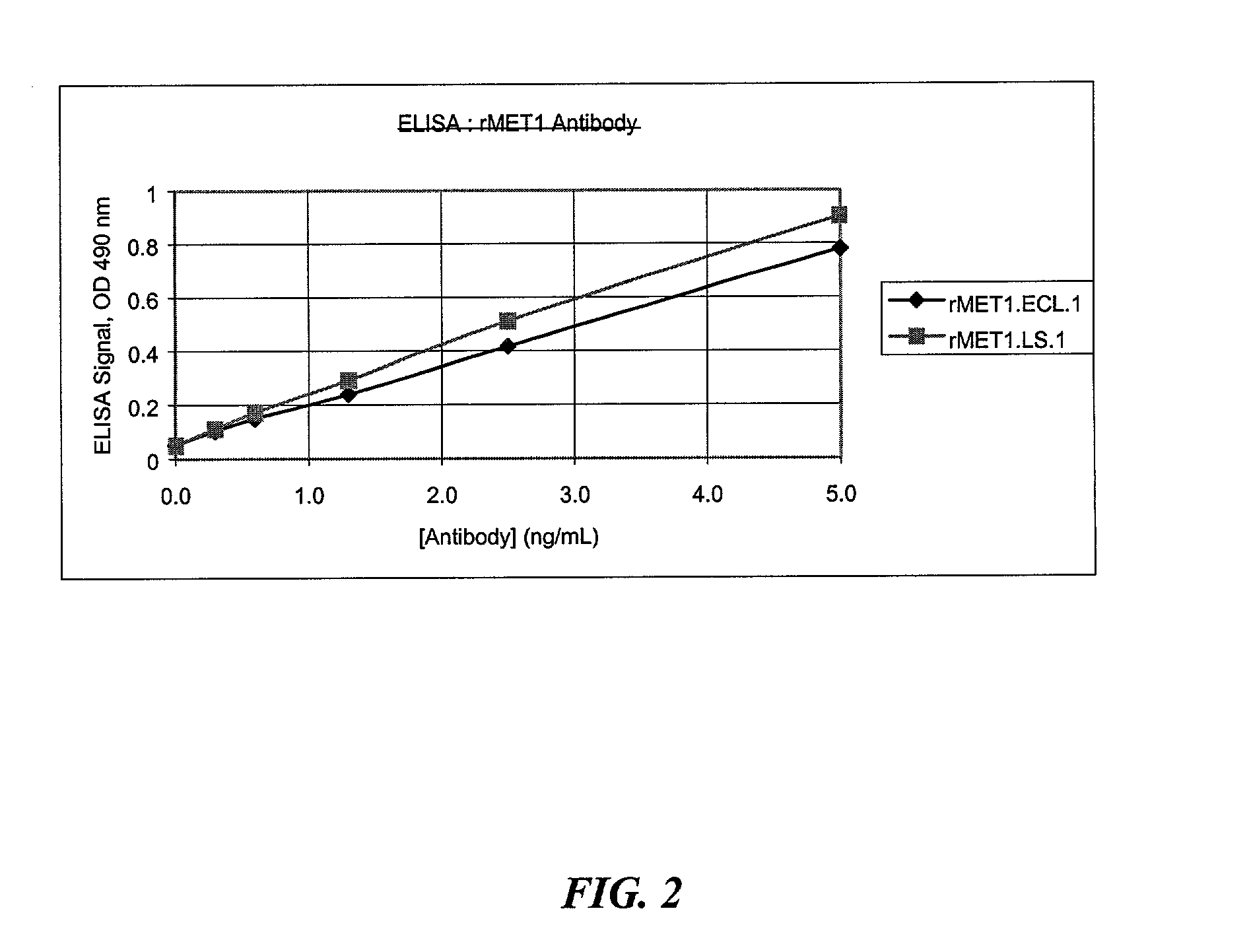Eukaryotic signal sequences for prokaryotic expression
a prokaryotic and eukaryotic technology, applied in the field of eukaryotic signal sequences for prokaryotic expression, can solve the problems of inability to correctly cleave the signal peptide, inability to efficiently function in a prokaryotic host, unpredictable, problematic, less efficient,
- Summary
- Abstract
- Description
- Claims
- Application Information
AI Technical Summary
Benefits of technology
Problems solved by technology
Method used
Image
Examples
example 1
Construction of Expression Vectors Having Lac and Rhamnose Promoters
Preparation of AL1.3 Expression Vector
[0103]An expression vector similar to those described in Example 17 of U.S. Pat. No. 6,057,098 was developed for cloning Fabs with different signal sequences on the kappa chain. The vector is a modified pBR322 plasmid, designated AL1.3, that contains a lac promoter (Plac), ampicillin resistance gene, NsiI and HindilI restriction sites, and a partial tetracycline resistance gene.
[0104]Polymerase chain reaction (PCR) primers, B and C (Table 2), were made corresponding to the sequence at the 3′ and 5′ ends of the lac promoter, respectively. The primers B and C, in addition to having sequence specific to Plac, contain approximately 20 nucleotides of pBR vector sequence at their 5′-ends complementary to the 3′ side of the HindIII restriction site and the 5′ side of the EcoRI restriction site, respectively. In addition, primer B places a NsiI restriction site at the 3′-end of the lac ...
example 2
Selection of Eukaryotic Signal Sequence
[0120]A total of twenty different eukaryotic signal sequences (Table 1) were used to replace the pectate lyase (pelB) signal sequence on a control antibody, CDTXA.22.2 (Example 15 of U.S. Pat. No. 6,057,098). The resulting clones had an eukaryotic signal sequence directing secretion of the kappa chain and a prokaryotic signal sequence, alkaline phosphatase (alkP), directing secretion of the heavy chain. The alkP signal sequence was used for the heavy chain so that the eukaryotic signal sequences linked to the kappa chain could be analyzed independently for efficient expression and secretion, as well as complete processing by SDS-PAGE analysis.
[0121]The 5′-primers corresponding to the twenty eukaryotic signal sequences in Table 1 all contained approximately 20 nucleotides at their 5′-end corresponding to the 3′-end of the lac promoter in vector AL1.3 (Example 1), followed by the sequence coding for each of the eukaryotic signal sequences in fram...
example 3
Evaluation of Eukaryotic Signal Sequences on CD.TXA.22.2 Antibody Expression Levels
[0126]Twenty sets of clones containing different plasmids, WC2A-WC22A, were constructed as described in Example 2 and used to express the anti-C. difficile toxin A antibody CDTXA.22.2 with an inducible rhamnose promoter. In all cases, the heavy chain was engineered with a prokaryotic alkaline phosphatase signal sequence. In the control set, WC2A, the kappa chain was engineered with a prokaryotic pelB signal sequence, while in the remaining nineteen, it was engineered with nineteen distinct eukaryotic signal sequences. In all cases, the antibody heavy chain was also engineered with a hexahistidine tag on the C-terminus to allow for affinity purification. The plasmids contained tetracycline and ampicillin resistance genes to allow for selection during culture. These plasmids were electroporated into E. coli strain DH10B rha+(Invitrogen, Carlsbad, Calif.). Three clones from each set were evaluated for ex...
PUM
| Property | Measurement | Unit |
|---|---|---|
| Mass | aaaaa | aaaaa |
| Mass | aaaaa | aaaaa |
| Mass | aaaaa | aaaaa |
Abstract
Description
Claims
Application Information
 Login to View More
Login to View More - R&D
- Intellectual Property
- Life Sciences
- Materials
- Tech Scout
- Unparalleled Data Quality
- Higher Quality Content
- 60% Fewer Hallucinations
Browse by: Latest US Patents, China's latest patents, Technical Efficacy Thesaurus, Application Domain, Technology Topic, Popular Technical Reports.
© 2025 PatSnap. All rights reserved.Legal|Privacy policy|Modern Slavery Act Transparency Statement|Sitemap|About US| Contact US: help@patsnap.com



